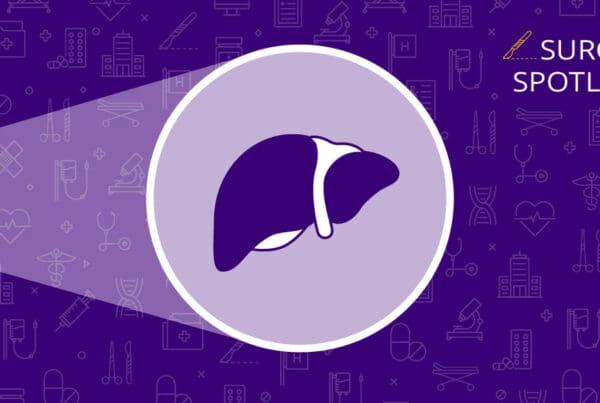Highlights | Integrative medicine: whole-person care
- UW Medicine Osher Center for Integrative Health is one of 10 Osher Centers nationwide.
- Integrative medicine practitioners partner with other family medicine providers to deliver mind-body medicine techniques.
- Medical students and residents receive integrative medicine education and training through the center.
For decades, holistic care has been a hot topic in healthcare. The concept of treating the whole person — rather than only their symptoms — captivates medical providers and patients alike. And the desire to access this type of care continues to grow.
Enter: The UW Medicine Osher Center for Integrative Medicine. As part of the Department of Family Medicine, the center blends conventional medicine and complementary practices to foster healthy living in a patient-focused way.
“Integrative medicine looks at the wider picture of a person’s health, and it focuses on health and healing rather solely disease management,” says family medicine and integrative medicine practitioner Debra Bell, MD. “These are areas where conventional medicine falls short.”
Strengthening family medicine
Integrative and family medicine naturally complement each other because they share a patient-centered approach. When practiced together, they can create a deeper understanding of health that often leads to a better quality of life for patients.
“Family medicine is the perfect environment to incorporate integrative medicine,” says Iman Majd, MD, MS, LAc, director of the Osher Center. “We cover a full spectrum of patients from pregnant to middle-aged and older people. As the entry point for primary care, family medicine is the best place to start with these integrative services dedicated to whole-person care.”
Integrative medicine adds a wide range of services to family medicine, giving patients access to acupuncture, nutrition services, psychotherapy, massage therapy, mind-body medicine techniques, such as mindfulness practices or stress reduction techniques, and more. Majd says pairing these evidence-supported services with traditional medicine can be particularly effective in addressing chronic conditions.
Bell agrees, adding that incorporating integrative medicine also opens the door for more effective patient-provider interactions.
“As technology in our healthcare system has grown, we’ve minimized or pushed out some components of having a relationship with your practitioner,” she says. “Integrative medicine gives people the opportunity to participate in a collaborative relationship with their provider — to look at their needs: mind, body and spirit.”
The patient experience
Bell says that primary care doctors are eagerly embracing these methods and using them more often. Many providers refer their patients to her for consultations and recommendations. She also frequently discusses integrative medicine with her own patients and refers them for care.
“I’m doing integrated primary care, and I collaborate a lot with the integrative medicine specialists,” she says. “For example, I can see results from what the acupuncturist does through the electronic medical record. We can message each other to ensure the patient gets the best care, just like with other specialties.”
And patient response to integrative care has been enthusiastic, Majd says.
“The demand from patients has always been there. People do their own research and seek care to promote their health,” he says. “The proof that people need these integrative services is the fact that we’re overbooked. There’s a long waiting list for us.”
Community interest is also growing, he says. The Osher Center offers a five-session community outreach course to educate the public about how integrative medicine can impact their health. Each monthly meeting focuses on brain health and nutrition, and attendance has increased with each event.
Supporting medical learners
Interest in integrative medicine is also expanding among medical students and residents.
“Our students really enjoy this different approach to medicine,” Bell says. “It’s a different way to think about primary care.”
Medical students who rotate through Bell’s clinic — Primary Care at Northgate — get exposure to integrative medicine concepts. Integrative specialists provide didactic training during family medicine rotations, and residents who want additional, hands-on instruction can participate in a four-week elective.
UW Medicine is also going a step further, she says. Plans are in place to create a residency wellness program based on the tenets of integrative medicine.
The UW Medicine environment
Ten Osher Centers exist nationwide, and each one has a distinct culture. But several unique aspects of UW Medicine made it a particularly attractive place to launch an integrative medicine program, Majd says.
As an integrated clinical, research and learning health system serving patients from five states, UW Medicine substantially impacts community health. According to Majd, the diverse patient population, ranging from very wealthy groups to underserved communities, is one of the most appealing attributes.
These characteristics will foster the continued growth of UW Medicine’s integrative medicine program, helping it reach even more patients.
“In the private sector, integrative medicine is often for privileged people. It’s not always evidence-based and it’s not always accessible to people outside urban areas,” he says. “We have the opportunity at UW Medicine to continue our research efforts and educate people who might become interested in integrative medicine. Our reach lets us provide services to all levels of patients. That’s valuable.”
More on integrative medicine
The Osher Center hosts lectures for those interested in integrative medicine. Check out the Brain Health & Nutrition Series with upcoming lectures on food vs supplements and how food affects mood.


